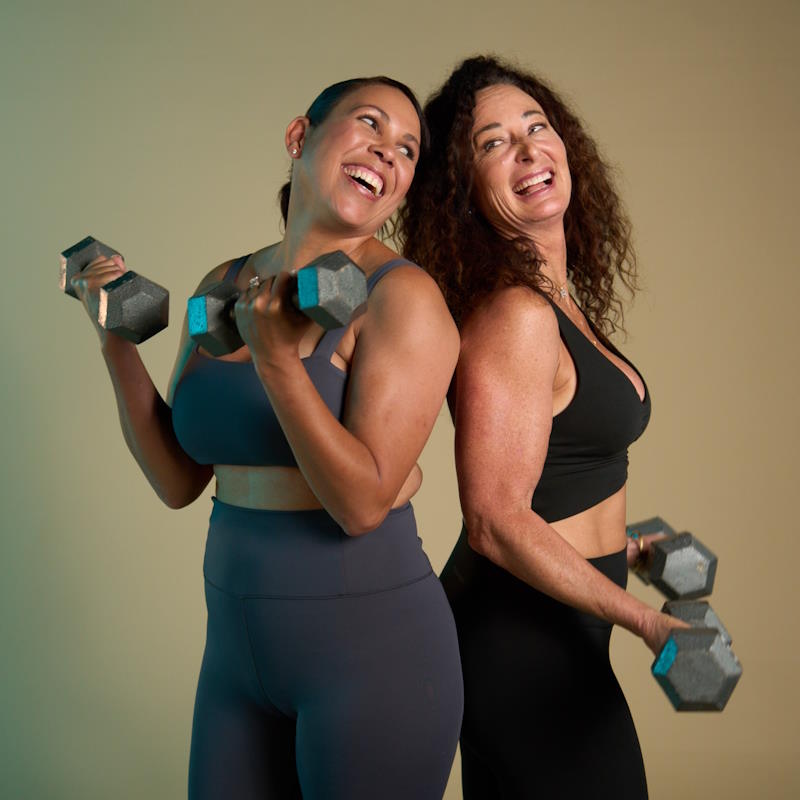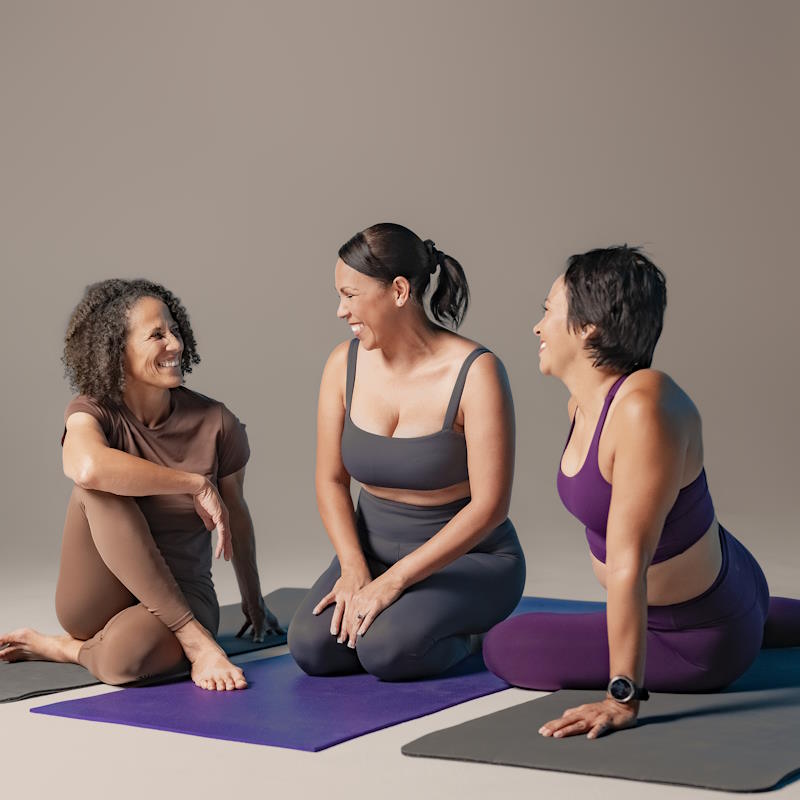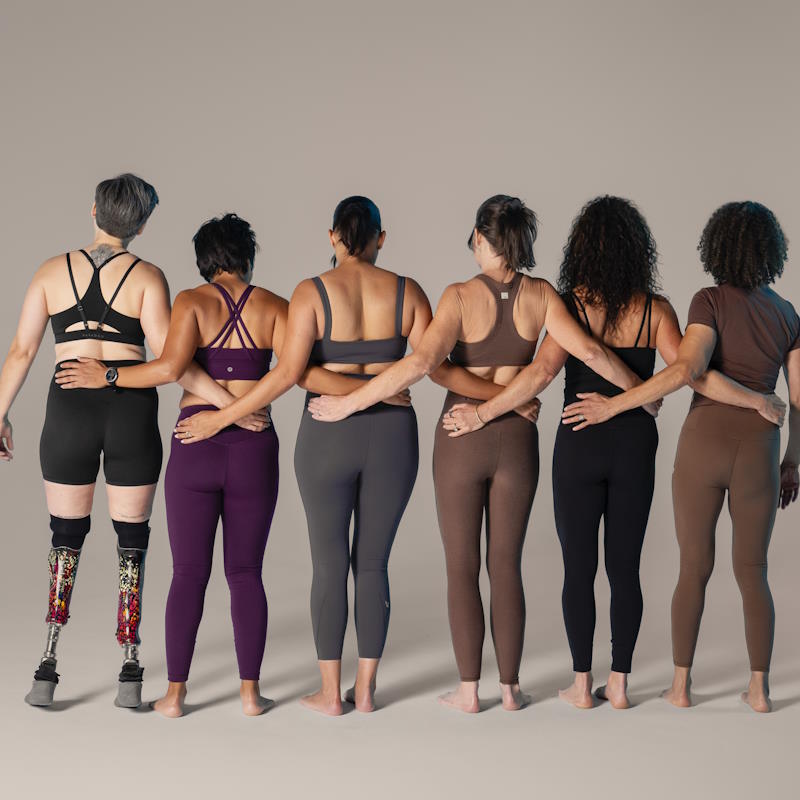
Discover your menopause stage and get the best exercises to stay healthy and feel your best through your stage.
*Disclaimer: This quiz was created with menopause experts to help guide you, but it is not a formal diagnosis. For medical advice or treatment, please consult your doctor.
Let's go!
Premature menopause (under the age of 40) is rare, but can happen because of genetics, autoimmune conditions, or medical treatments.
Let's keep going
Perimenopause can start up to 10 years before the onset of menopause. That means it is quite common to start experiencing symptoms in your late 30s and early 40s.
Let's keep going
Perimenopause can start up to 10 years before the onset of menopause. The average age of menopause worldwide is 51 years old.
Let's keep going
The average age of menopause globally is 51 years old. Once you have gone a year or longer without a period, you are considered menopausal.
Let's keep going
You can absolutely still gain muscles in your 60 and beyond! Strength training is key in helping you increase muscle mass, improve bone health, increase metabolism, and more!
Let's keep goingSlide to indicate more severe

75% of women in perimenopause or menopause experience hot flashes. Did you know it is due to a decline in estrogen that affects the body's temperature regulation?
Let's keep going
Weight gain affects nearly 80% of women during the menopause transition. In fact, the average woman will gain 5-10 pounds during this time. There are ways to curb this!
Let's keep going
Up to 70% of women will experience increased fatigue during perimenopause and beyond. The decrease in estrogen and progesterone can disrupt sleep patterns, and hot flashes love to strike at night.
Let's keep going
Hormonal changes can affect neurotransmitter levels and blood vessel dilation, leading to increased headache frequency and intensity.
Let's keep going
Nearly 60% of women notice hair thinning during this time. Decreased levels of estrogen and progesterone can affect hair growth cycles. Stress, nutrition, and genetics play a role, too.
Let's keep going
Estrogen plays a big role in maintaining joint health and reducing inflammation. When estrogen dips in perimenopause and menopause, it is common to experience more aches and pains.
Let's keep going
Breast tenderness is a normal symptom of perimenopause and beyond, affecting 1 in 2 women. The changes in hormones, specifically estrogen and progesterone levels, can lead to swelling and sensitivity.
Let's keep goingSlide to indicate more severe

You can thank decreased estrogen levels for more anxiety. Estrogen feeds serotonin, the "happy chemical," so the drop in this hormone can trigger more anxiety.
Let's keep going
1 in 3 women notice an increase in depression symptoms. Falling estrogen and progesterone levels can trigger mood swings that make you less able to cope with things you'd normally let roll off your back.
Let's keep going
Falling estrogen and progesterone levels can trigger mood swings that make you less able to cope with things you'd normally let roll off your back. Also, physical menopausal symptoms can lead to stress and fatigue, intensifying emotions.
Let's keep going
Estrogen plays a significant role in cognitive function. So if you find yourself more forgetful it could be the drop in estrogen. Not to even mention sleep disturbances...
Let's keep going
Fluctuations in the hormones estrogen and progesterone can really add fuel to our PMS fire. About 1 out of 2 women will notice it worsen during perimenopause.
Let's keep goingSelect all that apply
Select all that apply
By filling out this form you are agreeing to opt-in to email communications from Menovation.
We use your email and symptom info to personalize your app experience and improve development. Your data is never shared, and you can unsubscribe anytime.
Reviewing your quiz submission...
Show Me My Results
Your results show:
You're not in perimenopause—yet.
Menopause happens in phases: perimenopause (which can last up to 10 years!), menopause (when you’ve gone 12+ months without a period), and postmenopause—each bringing its own hormonal and physical changes.
While you’re likely not in perimenopause yet, understanding these stages early can help you recognize symptoms, make informed health choices, and be more proactive now–before it starts.
We’ve sent you a FREE VIDEO GUIDE! Check your inbox for your free video guide:
Prepare Your Body Before Perimenopause
The more you know now, the more confidently you can navigate this transition.
(P.S. Be sure to grab your copy in your inbox!)

Your results show:
You’re in perimenopause!
Your quiz results show you’re in the phase where hormones start to fluctuate, often causing unpredictable symptoms.
You’re not alone in this. Understanding what’s happening is the first step to feeling more in control.
We’ve sent you a FREE VIDEO GUIDE! Check your inbox for your free video guide:
6 Essential Tips to Improve Your Perimenopause Journey
With the right knowledge and support, you can navigate this stage with confidence.
(P.S. Be sure to grab your copy in your inbox!)

Your results show:
Menopause is approaching—get ready.
As you near menopause, your periods will become less frequent, and hormone shifts may bring changes like irregular cycles, hot flashes, or sleep disruptions.
We’ve sent you a FREE VIDEO GUIDE! Check your inbox for your free video guide:
7 Tip Survival Guide to Menopause
Understanding what’s ahead can help you prepare and support your body through this transition.
(P.S. Be sure to grab your copy in your inbox!)

Your results show:
You’ve made it through menopause—now what?
You’re officially in post-menopause, meaning your hormone levels have stabilized, and your period is behind you. This is a new chapter, and an opportunity to focus on strength, energy, and long-term health.
We’ve sent you a FREE VIDEO GUIDE! Check your inbox for your free video guide:
Essential Tips for Thriving After Menopause
With the right movement, nutrition, and support, you can feel your best in this new chapter.
(P.S. Be sure to grab your copy in your inbox!)